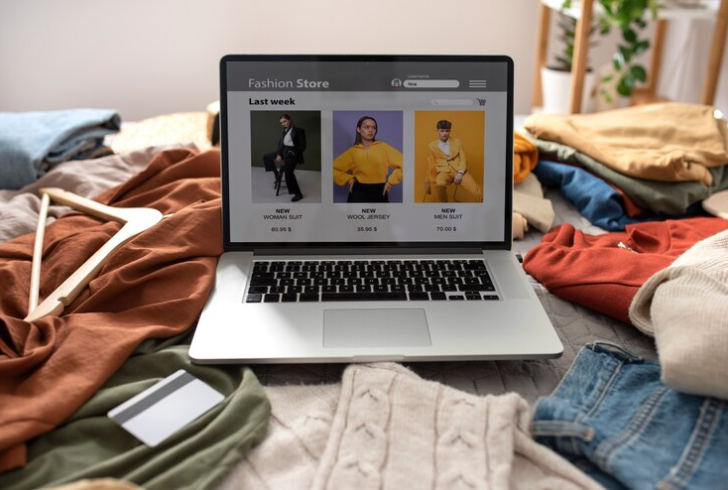If fashion is your calling, learning how to start a clothing business can transform your artistic vision into a flourishing career. With the digital age enabling entrepreneurs to reach a global market, launching a clothing line is now more workable than ever.
Whether you’re collaborating with wholesalers or engaging eager buyers, here’s a detailed guide on how to embark on your clothing venture from scratch.
Essential Steps on How to Start a Clothing Business
1. Find Your Niche in the Fashion World

The fashion realm is vast, filled with diverse brands each catering to specific styles and market segments. The first step is to pinpoint your niche. This focus allows you to tailor your product offerings to meet the specific preferences of your target audience, establishing a strong brand identity. While versatility might seem appealing, the most successful brands are those that know their niche well and cater to it.
Successful examples across various niches include:
- Wrangler for casual wear
- Adidas for athletic apparel
- H&M for trendy outfits
- Ralph Lauren for timeless classics
Choosing a niche should align with your strengths. For instance, if you excel in sewing, you might focus on creating unique handmade pieces. If you’re a graphic artist, designing prints for t-shirts and other apparel could be your forte.
2. Understand Your Audience
Identifying your target customer is crucial when figuring out how to start a clothing business. Fashion is unique as it allows you to visualize who will wear your designs while also posing the challenge of reaching these consumers, whether online or in physical stores.
Consider these key questions:
- Who is your ideal customer?
- What brands do they currently enjoy?
- Where do they prefer shopping?
- How often do they buy new clothing?
- Are they trend followers?
- What price points are they comfortable with?
- What influences their buying decisions?
Answering these questions will help you craft a marketing strategy that resonates with your potential customers, making your brand more relevant and appealing to them.
3. Develop a Strategic Marketing Plan

With a clear understanding of your niche and audience, the next phase in how to start a clothing business involves crafting a focused marketing plan. This plan doesn’t need to be exhaustive but should outline:
- The market and competitors
- Preferred distribution channels
- Marketing strategies
- Budget for marketing and advertising efforts, including social media and PPC ads
A well-thought-out marketing plan is essential for determining how to position your brand in the market, influencing product distribution and sales strategies.
4. Naming and Branding Your Clothing Line
Choosing a memorable and relevant name for your clothing line is critical. Ensure the name is easy to pronounce, memorable, and checks out in key markets. Also, verify domain availability to establish an online presence.
Once named, develop a cohesive brand identity by selecting a color scheme and designing a logo, which can be created using tools like Canva or sourced from professional designers on platforms like Fiverr.
5. Legalize Your Business
Registering your business is a necessary step in making your venture official. This process involves selecting a business structure, such as an LLC, and registering with your state’s Secretary of State.
Doing so allows you to obtain an Employer Identification Number (EIN), necessary for business transactions and beneficial for wholesale purchases.
6. Design and Source Your Products
Whether you choose to design in-house, work with manufacturers, or source from wholesalers, each option depends on your business model and how you intend to sell your products. The choice affects not only the uniqueness of your offerings but also your pricing strategy and marketing.
7. Pricing Strategy
In fashion, pricing should reflect the cost of goods sold and the target market’s expectations. Depending on your niche, pricing might range from keystone markups (doubling the cost) to higher multipliers for luxury segments. Include costs like materials, labor, marketing, packaging, and shipping in your calculations.
8. Distribute Your Products

Deciding on distribution channels is crucial. Options include selling through your website, third-party platforms like Amazon and Etsy, or physical retail outlets.
Even if online sales are your primary focus, maintaining a physical presence or having a professional website can enhance credibility and reach.
9. Market Your Brand
The final step in how to start a clothing business is effective marketing. Use a mix of organic and paid marketing strategies tailored to where your target audience spends their time.
Options include:
- Social media (Instagram, Pinterest)
- PPC and banner ads
- Influencer collaborations
- Local events and news features
Diverse marketing channels will help maximize your brand’s visibility and attract more customers.
Starting a clothing business merges creativity with entrepreneurship, offering a unique opportunity to see your designs worn and enjoyed daily. With dedication and strategic planning, your clothing business can thrive, turning your passion for fashion into a profitable venture.




